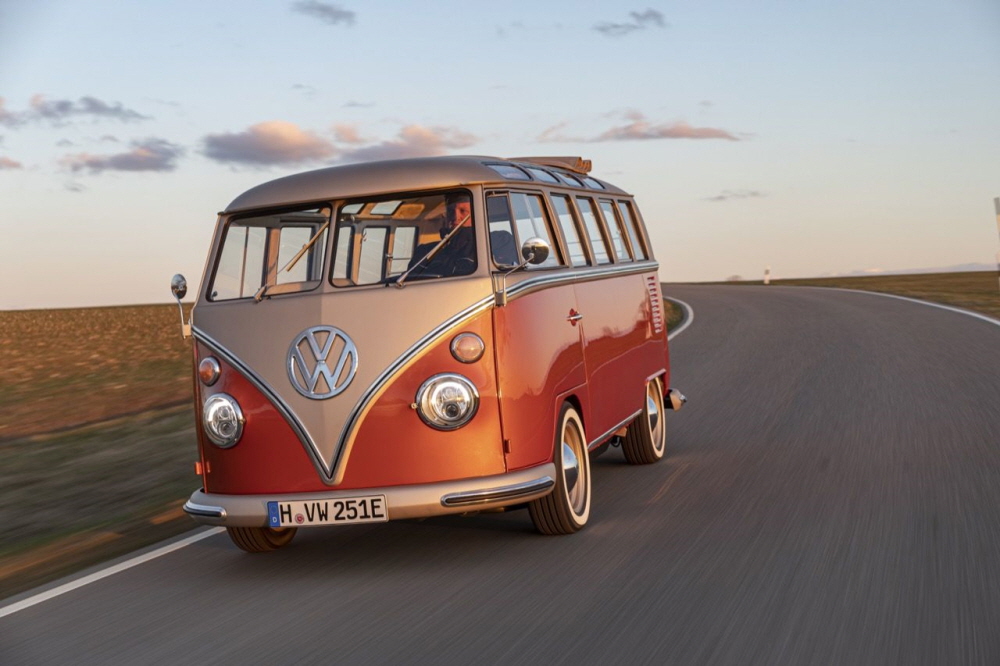
The e-BULLI is the Volkswagen’s commercial vehicle segment converting the classic 1966 classic Microbus Bully into an electric vehicle. Volkswagen cooperated with German company eClassics to turn EV. The company has a track record of converting several classic cars into EVs so far.
The vehicle based on it is the first-generation model T1, which was produced in Hannover, Germany in 1966 and has been running the road in California, USA for more than half a century. Engineers from both companies removed the four-cylinder engine stacked in the rear and instead installed a small e-up electric motor and battery sold by Volkswagen.
This will increase the peak power from the original 44 hp to 83 hp, and the maximum torque will increase from 102 Nm to 212 Nm, more than doubled. While the four-cylinder engine barely reaches its maximum torque over 2,000 rpm, the electric motor generates maximum torque from the moment it starts running. This explains that it changed everything about driving a Volkswagen bus. The top speed is limited to 130km/h to protect the battery, but still exceeds the top speed of 105km/h at the time of production with a margin.
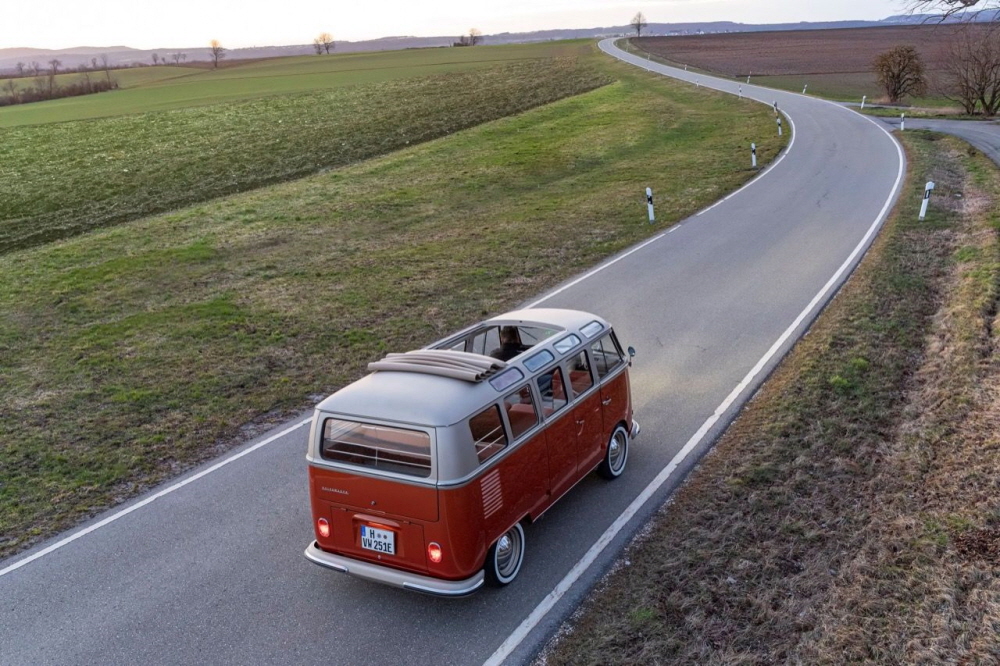
The electric motor is mounted on the rear of the body where the engine was stacked and drives the rear wheels as before. The lithium-ion battery laid on the floor is modularized to fit the bus body, has a capacity of 45kWh, and can run 200km with a single charge. The CCS socket hidden at the back of the rear license plate supports both AC and DC, and 50kW DC fast charging allows you to charge up to 80% of the battery capacity in 40 minutes.
The chassis has also been greatly strengthened to match the power supply, which has doubled the performance. The modified front and rear axles on the far link were equipped with adjustable shock absorbers and coil-over struts, and steering was also improved for maneuverability. A four-wheel brake was also adopted to safely slow down the vehicle body, which was increased by battery weight.
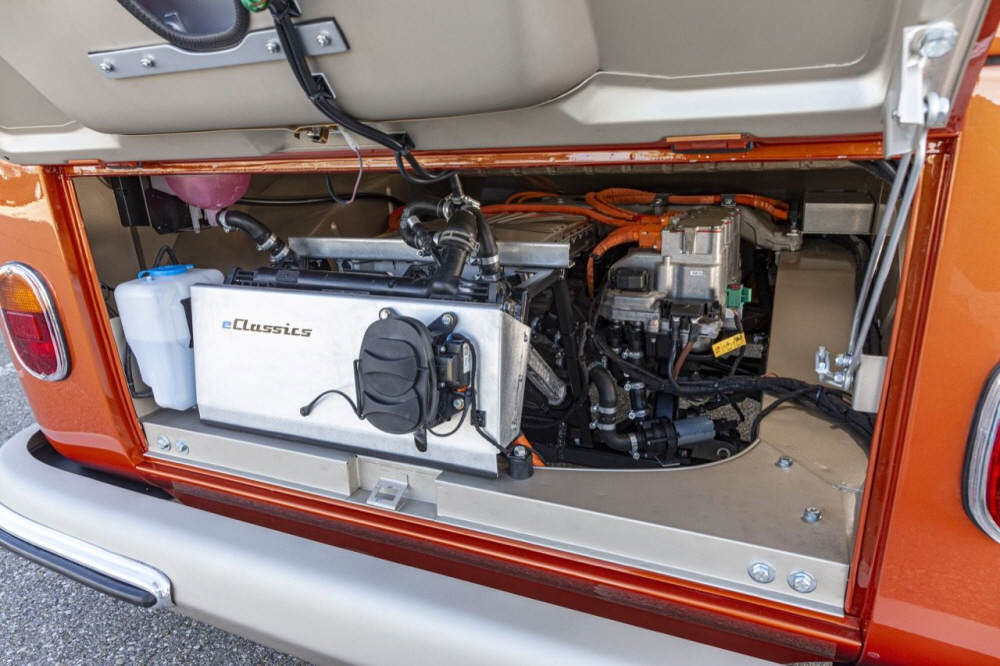
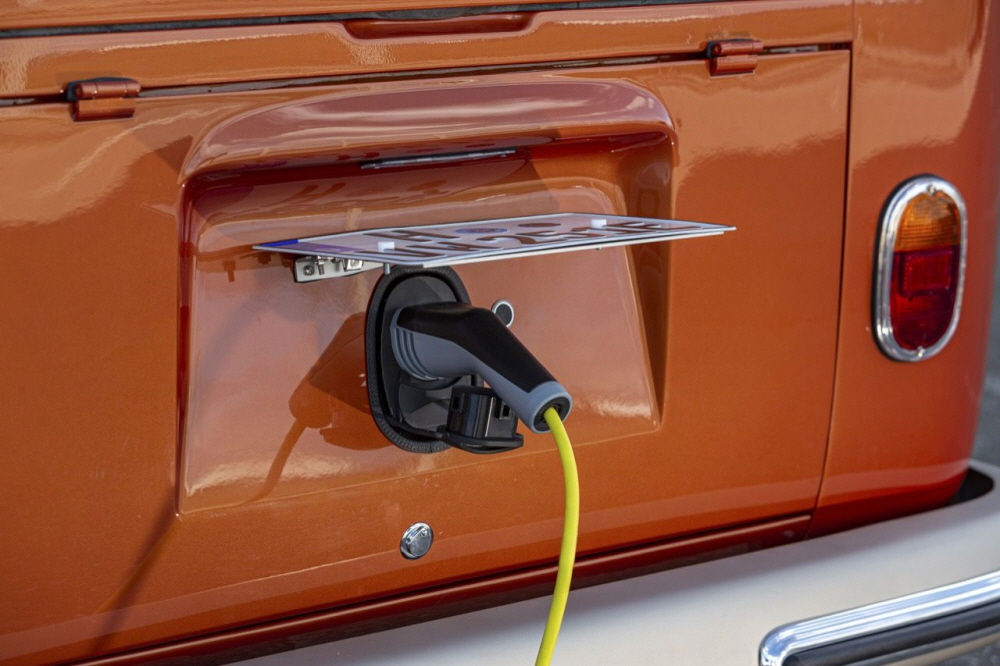
Of course, while the interior has changed significantly, the exterior is suppressed so that the classic taste and modern comfort coexist. LEDs are used in the round headlights, so the brightness is much higher than that of the existing dim shield beam.
In the interior, which is covered in two-tone leather according to the exterior, the original long manual shift lever was removed, and a modern automatic transmission was placed in the driver’s and passenger’s sari. In addition to the familiar P, R, N, and D shift positions, there is also a B that can manually change the regenerative brake effect. The engine start also uses the electric system boot button.
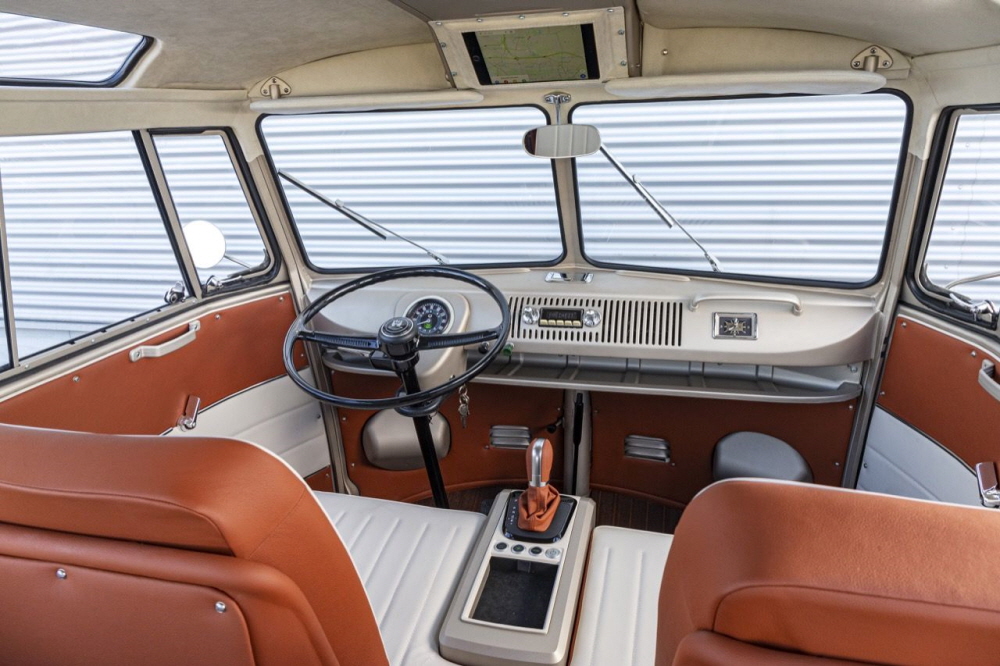
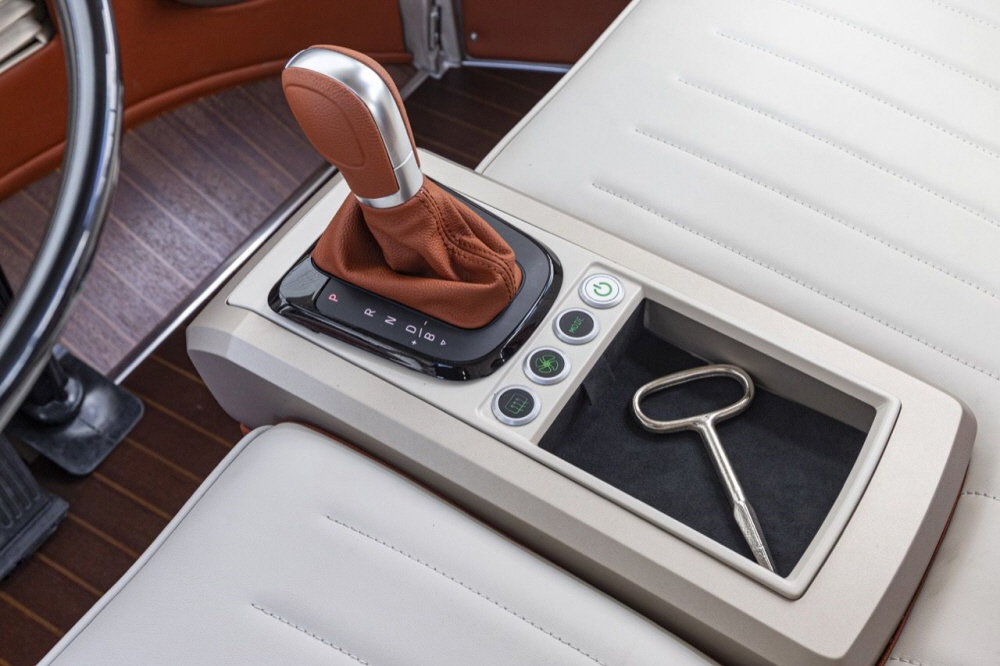
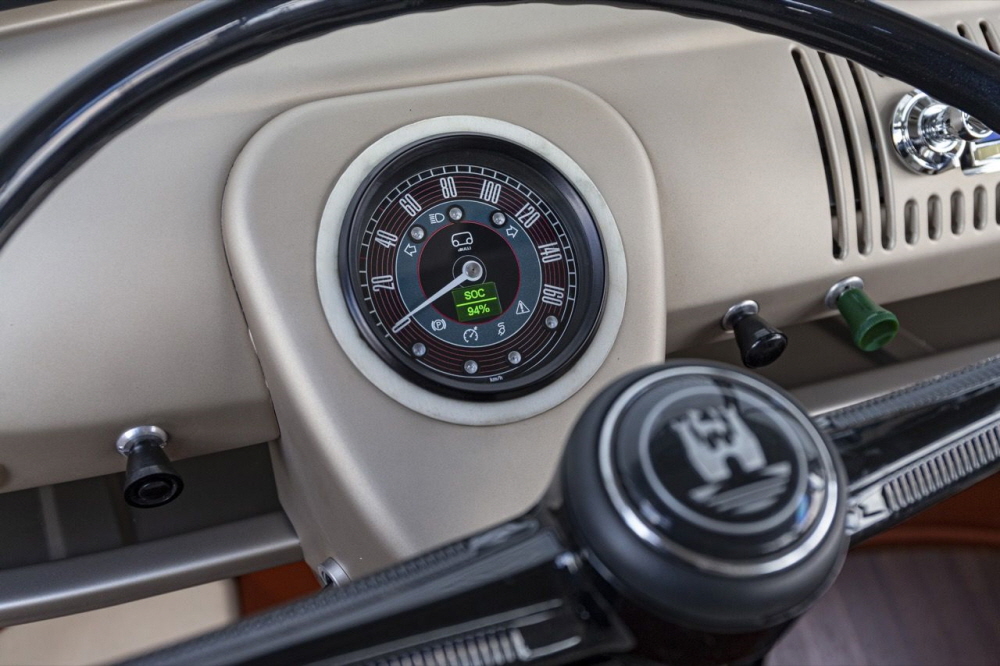
Based on the original original, the speedometer has a small two-line digital display built into the dial to indicate the distance and battery remaining. At 12 o’clock, a mark was also attached. The retro radio has Bluetooth and USB connections, so you can listen to digital audio broadcasts. Speakers including an active woofer are also added, and navigation maps are displayed on the upper part of the driver’s seat through a tablet.
The price is 64,900 euros, including both the upgraded front and rear axles. In addition, if you don’t own the bus yet, you’ll need a separate fund for the base vehicle. Related information can be found here.


















Add comment